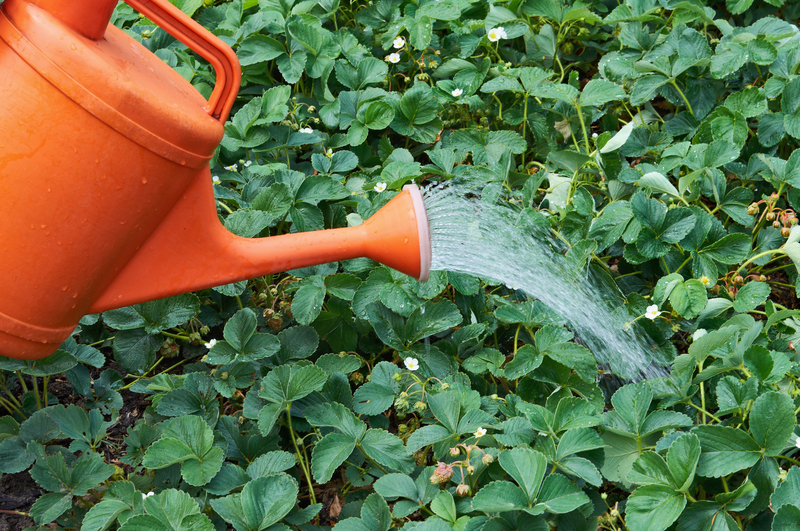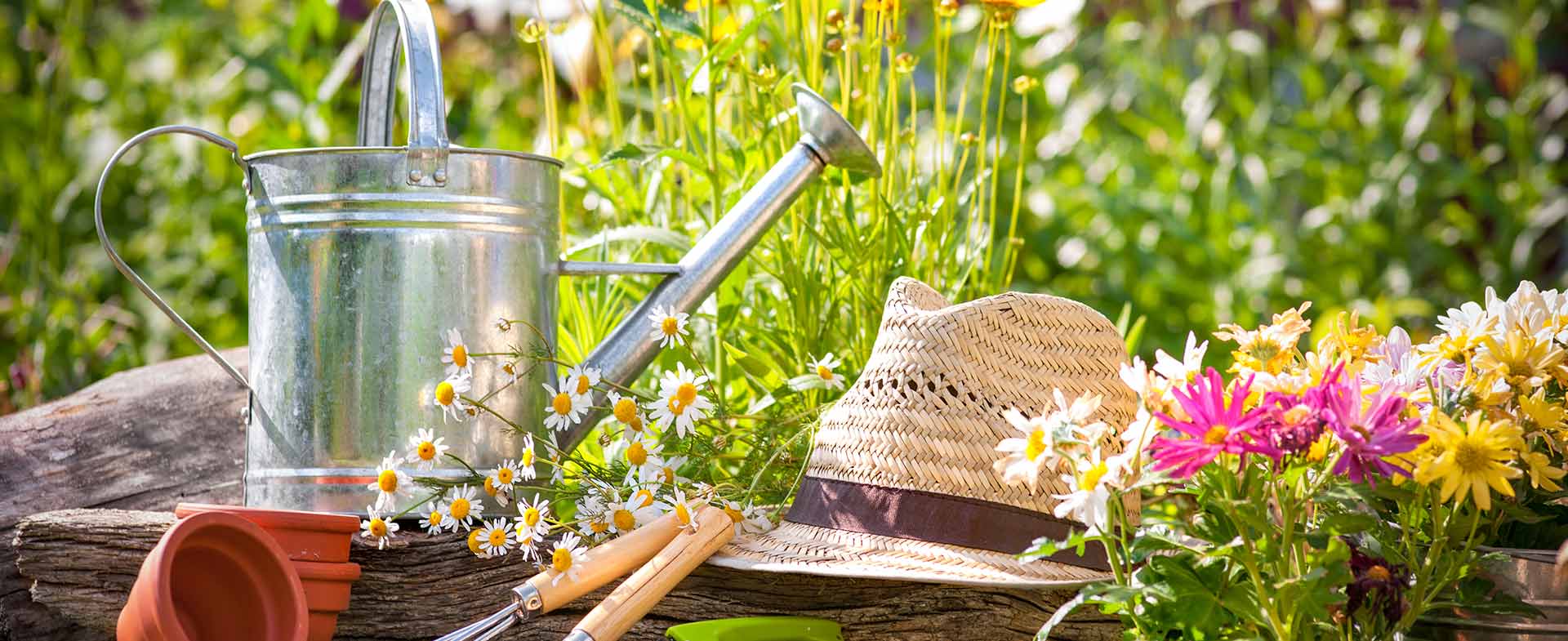Designing a Safe and Fun Garden for Kids
Posted on 14/08/2025
Designing a Safe and Fun Garden for Kids: A Complete Guide
Are you dreaming of a beautiful outdoor space that delights children and gives you peace of mind? Designing a safe and fun garden for kids doesn't have to be complicated--by combining creativity with safety strategies, you can cultivate an outdoor environment that stimulates curiosity and keeps little ones protected. In this comprehensive guide, you'll find practical tips, innovative ideas, and expert advice to help you build the ideal kids' garden.

Why Child-Friendly Gardens Matter
A well-designed child-friendly garden offers numerous benefits, from nurturing a love of nature to encouraging physical activity, and teaching valuable life skills. Children thrive when given the freedom to explore a safe outdoor environment, and gardens provide ample opportunities to stimulate imagination, boost health, and strengthen family bonds.
- Physical Development: Running, climbing, and digging help kids strengthen muscles and improve coordination.
- Emotional Health: Nature has a calming effect and supports emotional well-being.
- Learning & Creativity: A garden sparks curiosity about plants, insects, weather, and more.
Planning Your Safe and Fun Garden for Kids
Step 1: Assess Your Space and Needs
Before you grab your gloves and shovel, take time to evaluate your garden area. Consider the size of your backyard, existing features, and the ages and interests of your children. Safe garden design for kids begins with understanding both possibilities and limitations.
- Sunny vs. Shaded Areas: Are there trees or structures providing shade? Some activities, like sandpits or reading nooks, benefit from a shady spot.
- Flat vs. Sloped Land: Flat areas are ideal for play equipment, while slopes can work for slides or raised beds.
- Existing Hazards: Check for pools, ponds, sharp tools, toxic plants, or unstable fences that need to be addressed before beginning.
Step 2: Focus on Safety First
The foundation of any garden for kids must be safety. Mitigate potential hazards to ensure your children can play and explore worry-free. Here are essential safety guidelines for your kids' outdoor space:
- Secure Boundaries: Repair fences, lock gates, and install latches out of children's reach for privacy and security.
- Soften Surfaces: Use grass, mulch, or play mats under equipment to cushion falls. Avoid concrete and hard stones in play zones.
- Remove Dangerous Plants: Uproot or fence off toxic or spiky plants such as foxgloves, oleander, and roses. Teach kids not to touch or eat unknown plants.
- Cover Water Features: Fencing, netting, or eliminating ponds/pools can prevent drowning accidents. Always supervise near water.
- Safe Tools and Storage: Store tools, fertilizers, and pesticides out of reach, preferably in a locked shed.
- Non-Toxic Materials: Opt for natural or certified non-toxic paints and construction materials for garden beds, furniture, and play equipment.
Incorporating Fun Elements in Your Child-Safe Garden
A playful garden is a memorable place where childhood adventures bloom. Once you've established the safety basics, unleash your creativity to add engaging features and activities!
1. Play Structures and Zones
- Sensory Play Areas: Sandpits, mud kitchens, and water tables inspire tactile exploration and imagination.
- Slides and Swings: Choose age-appropriate, sturdy equipment. Place on soft-ground surfaces and anchor securely.
- Climbing Frames: Encourage coordination with climbing walls, tunnels, or tree stumps (ensure heights are safe for your child's age).
- Outdoor Art Spaces: Install chalkboard walls, easels, or simple benches for painting and crafts.
2. Edible Gardens for Kids
Planting, tending, and eating from a child-friendly edible garden is endlessly rewarding. Edible gardens teach responsibility and nutrition, and empower kids to appreciate homegrown food.
- Easy-to-Grow Choices: Strawberries, cherry tomatoes, snap peas, lettuce, and sunflowers are fun and successful first crops for kids.
- Low Beds & Containers: Raised beds make it easier for little hands to dig and plant. Colorful pots add visual excitement.
- Herb Patches: Plant fragrant mint, basil, or chives--kids love to touch and smell!
- Snack Paths: Consider lining a walkway with edible plants, so children can nibble while they explore.
3. Nature Discovery Features
- Wildlife Zones: Bird feeders, insect hotels, and butterfly gardens bring nature closer and spark curiosity.
- Rock Gardens and Logs: Create safe piles for discovering bugs, or make a fairy garden for imaginative play.
- Observation Areas: Set up a bench or tree stump circle for quiet time, reading, or birdwatching.
Planting Themed Gardens for Engagement and Education
A themed garden can make time in the backyard engaging and educational. Try these ideas for your safe and playful children's garden design:
- Butterfly or Pollinator Gardens: Choose nectar-rich flowers to entice butterflies and bees. Label plants so children learn their names.
- Rainbow Gardens: Select flowers and veggies in every color for a vibrant effect that teaches about nature and diversity.
- Pirate or Adventure Gardens: Add hidden treasures, a ship-shaped planter, or a lookout post for role-play games.
- Storybook Gardens: Recreate scenes from favorite children's books--such as a Peter Rabbit veggie patch or a fairy tale cottage.
Encouraging Outdoor Activities and Learning
Beyond static play equipment, plan for activities that rotate with the seasons and expand your children's horizons. Here's how your child's safe garden can be the setting for ongoing learning:
- Growing Experiments: Set up mini science projects, like sprouting beans, observing worms, or measuring plant growth in a logbook.
- Scavenger Hunts: Create simple lists of items (a feather, a red flower, a smooth stone) to prompt exploration.
- Outdoor Picnics: Sharing snacks outside helps children appreciate both nature and family time.
- Nature Crafts: Collect leaves, twigs, or petals for art projects and introduce basic botany.
Accessibility and Inclusion in Kids' Gardens
Every child deserves the chance to enjoy the outdoors. Designing an accessible and inclusive garden for children may involve:
- Level Paths: Ensure walkways are flat and wide enough for strollers or wheelchairs, and surfaced with non-slip materials.
- Raised Beds: Make gardening accessible with beds at varying heights for children of all abilities.
- Multi-Sensory Elements: Incorporate sound (wind chimes), fragrance (herbs), and texture (soft lamb's ear plant).
- Quiet Retreats: Build cozy corners or tents for sensory breaks and alone time.
Gardening Safety Tips for Kids
- Supervision: Always keep a close eye on children in the garden, especially younger ones.
- Teach Safe Gardening: Demonstrate how to use tools, respect plants and wildlife, and wash hands after playing outside.
- Sun Protection: Provide hats, sunscreen, and shaded areas to shield kids from excessive sun exposure.
- Appropriate Clothing: Encourage closed-toe shoes and long sleeves to protect from thorns, bites, and scratches.
Involving Kids in Designing Their Garden
Children are more likely to care for a garden space when they help design, build, and maintain it.
- Gather Ideas: Ask your kids what features they want--swings, forts, secret paths, or an area to dig.
- Draw Plans: Sketch garden layouts together, using colored pencils or chalk to visualize zones.
- Choose Plants: Let children pick seeds or young plants. Involve them in daily watering and weeding.
- Name the Garden: Create a welcome sign, like "Emma and Jake's Magical Garden" for a sense of ownership.
Maintenance for a Safe and Fun Kids' Garden
An inviting garden for children needs regular attention to remain safe and enjoyable year-round:
- Inspect Play Equipment: Check for loose bolts, splinters, or rust. Repair and replace as needed.
- Prune Overgrown Plants: Keep paths clear to prevent trips and falls and allow for easy visibility.
- Sanitize Bird Feeders and Water Tables: Prevent the spread of germs and pests.
- Seasonal Updates: Refresh mulch, update plantings with each season, and rotate toys to keep the space exciting.
Eco-Friendly Choices in Children's Garden Design
Instilling respect for nature begins with sustainable choices. Here's how to design an eco-friendly child's garden:
- Collect Rainwater: Install a rain barrel to water plants and teach conservation.
- Compost Together: Build a small compost bin for kitchen scraps and garden waste--kids love seeing scraps turn into rich soil!
- Native Plants: Focusing on local species supports pollinators and reduces water needs.
- DIY Recycled Projects: Use upcycled materials for planters, stepping stones, or decorations.

Frequently Asked Questions about Safe and Fun Kids' Gardens
What are the safest surfaces for children's play areas?
Soft, shock-absorbing materials like rubber mulch, engineered wood chips, or natural grass are best. Avoid concrete, gravel, and sharp rocks in areas where children may fall.
Which plants are safe for kids?
Favor non-toxic, sturdy plants such as sunflowers, marigolds, nasturtiums, sweet peas, and snapdragons. Always double-check toxicity for your climate/region, and teach kids not to taste unknown plants.
How do you keep the garden safe for toddlers?
Use secure fencing, cover or fence off water features, and focus on age-appropriate play structures placed on soft surfacing. Remove choking hazards like small stones or berries.
How can I make the garden engaging for different ages?
Design activity zones: creative play (e.g., sandpit) for younger kids, edible gardening or nature projects for school-aged children, and tranquil corners or raised beds for teens.
Is it possible to have a beautiful yet safe garden for children?
Absolutely! With thoughtful garden design for children, you can combine aesthetics and safety. Choose visually appealing plants, natural materials, colorful features, and clever layouts for a safe and fun kids' garden everyone will enjoy.
Conclusion: Building Lasting Memories in Your Family Garden
Designing a safe and fun garden for kids is a wonderful investment in your family's health, happiness, and togetherness. By balancing excitement with strict safety standards, involving your children in the process, and updating the environment as they grow, you'll create a magical, educational, and safe outdoor haven--right in your own backyard.
Start today with one small change, and watch your child-friendly garden design become the favorite destination for adventures, discoveries, and cherished memories for years to come!

